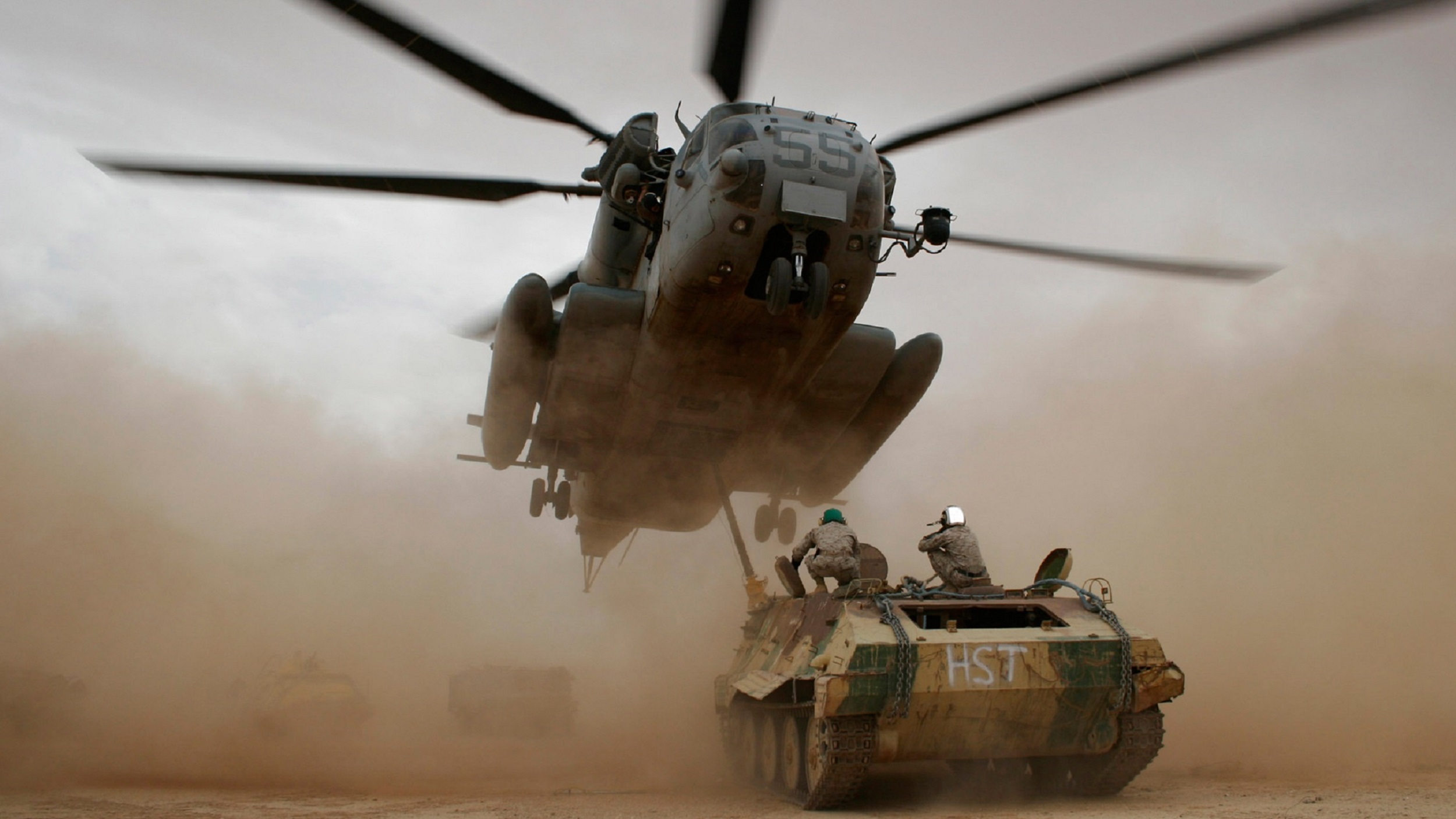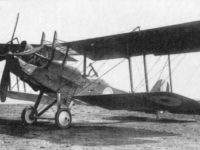The Royal Aircraft Factory R.E.8 was built as a successor to the Royal Aircraft Factory B.E.2 as reconnaissance aircraft and bombers. Despite the aircraft's poor performance, around 4.000 pieces were produced until the end of the war.
Development and construction:
In the first two years of the First World War, the Royal Aircraft Factory B.E.2 was the standard reconnaissance aircraft of the Royal Flying Corps. At the beginning of 1916, however, it was decided to introduce a successor model, since the B.E.2 had been in use since 1912, poorly armored and barely able to oppose the German fighter pilots. Although the aircraft was modernized several times over the course of time, but these were no longer enough in 1916.
Thus the company Royal Aircraft Factory began with the development of the R.E.8, whereby again the concept of a biplane was used in which the upper wing was much longer than the lower one. Thus, again high heights could be reached and the aircraft should be stable in the air.
The seating positions of the pilot and the observer were taken from the later version of the B.E.2. So the pilot sat in the front and the observer in the back.
The fuselage of the aircraft was again a conventional, wire-braced fabric-covered wood structure. The suspension of the engine was adopted by the B.E.12, as well as the large air scoop and similar vertically mounted exhaust pipes, which protrude above the upper fender to keep the exhaust gases from the crew. The drive was a 140-hp air-cooled V-12 engine of the Royal Aircraft Factory. A prototype was equipped for comparison purposes with a Hispano-Suiza engine, as these, as well as the Rolls-Royce engines were available only in limited quantities, was from a further planning with these apart.
The first prototype flew on 17 June 1916. In July, a second prototype was brought to France to be tested there under real conditions at the front. After these were completed and some improvements were stimulated, the first order over 50 aircraft was abandoned in early August 1916. On August 25, another order was placed for over 100 aircraft to be built under license by Austin Motors. The company Siddeley-Deasy received on August 30 also under license the contract for 100 aircraft.
A total of 4.077 R.E.8 aircraft were built until the end of the war, because of the ceasefire and the end of the war, the order of another 353 pieces was canceled.
Use in the First World War:
In November 1916, the 52nd Squadron received the first R.E.8 aircraft. Since this squadron was staffed with inexperienced pilots, it came in the first time to many fatal accidents during the landing, so that in January 1917 the aircraft had to be replaced again against the B.E.2.
Since experienced pilots had fewer problems with the flying of the aircraft, the delivery was continued. Due to the low speed and poor maneuverability, the aircraft were indeed well suited as reconnaissance aircraft, but in a battle with the German fighter pilots, they had to accept heavy losses. Especially in April 1917, the Germans had taken over the air sovereignty over the Western Front, it came, for example. on April 13, 1917 to a battle between British R.E.8 and German fighter pilots of the Jagdstaffel 11. Within a few minutes six British aircraft were lost.
Only when the Allies themselves brought new fighters to the front, the balance of power could balance again.
Although the aircraft did not provide the desired services, it still remained until the end of the war as a standard reconnaissance aircraft on the fronts of France, Italy, Russia, Palestine and Mesopotamia. At the end of the war a total of 19 squadrons were equipped with the aircraft.
After the truce, however, these were very quickly withdrawn from the fronts and sold in part to private individuals, since the aircraft at the end of 1918 was considered completely outdated.
Technical specifications:
| Designation: | Royal Aircraft Factory R.E.8 |
| Country: | Great Britain |
| Typ: | Reconnaissance plane, bomber |
| Length: | 8,48 meters |
| Span: | 12,98 meters |
| Height: | 3,45 meters |
| Mass: | 818 kg empty |
| Crew: | Max. 2 |
| Engine: | An air-cooled 12-cylinder inline engine Royal Aircraft Factory 4a with 150 hp |
| Maximum speed: | 164 km/h |
| Reach: | Max. 4 hours and 15 minutes |
| Armament: | Up to 3 x 7,7 mm Lewis or Vickers machine guns Up to 102 kilograms of bombs |
You can find the right literature here:
The First Air War, 1914-1918
In this concise study, Kennett tells the complete story of World War I's air battles, from Eastern to Western front, from the skies of Europe and its seas to those of the Middle East and Africa.
Aircraft of World War I 1914-1918 (Essential Identification Guide)
Illustrated with detailed artworks of combat aircraft and their markings, Aircraft of World War I: The Essential Aircraft Identification Guide is a comprehensive study of the aircraft that fought in the Great War of 1914–18. Arranged chronologically by theatre of war and campaign, this book offers a complete organizational breakdown of the units on all the fronts, including the Eastern and Italian Fronts. Each campaign includes a compact history of the role and impact of aircraft on the course of the conflict, as well as orders of battle, lists of commanders and campaign aces such as Manfred von Richtofen, Eddie Rickenbacker, Albert Ball and many more. Every type of aircraft is featured, including the numerous variations and types of well- known models, such as the Fokker Dr.I, the Sopwith Camel and the SPAD SVII, through to lesser-known aircraft, such as the Rumpler C.1, and the Amstrong Whitworth FK8. Each aircraft profile is accompanied by exhaustive specifications, as well as details of individual and unit markings. Packed with more than 200 color profiles of every major type of combat aircraft from the era, Aircraft of World War I 1914–1918 is an essential reference guide for modellers, military historians and aircraft enthusiasts.
World War One Aircraft Carrier Pioneer: The Story and Diaries of Captain JM McCleery RNAS/RAF

World War One Aircraft Carrier Pioneer: The Story and Diaries of Captain JM McCleery RNAS/RAF Hardcover – June 13, 2011
Jack McCleery was born in Belfast in 1898, the son of a mill owning family. He joined the RNAS in 1916 as a Probationary Flight Officer. During the next ten months he completed his training at Crystal Palace, Eastchurch, Cranwell, Frieston, Calshot and Isle of Grain, flying more than a dozen landplanes, seaplanes and flying boats, gaining his wings as a Flight Sub-Lieutenant. In July 1917 he was posted to the newly commissioning aircraft carrier HMS Furious, which would be based at Scapa Flow and Rosyth. He served in this ship until February 1919, flying Short 184 seaplanes and then Sopwith 1½ Strutters off the deck. He also flew a large number of other types during this time from shore stations at Turnhouse, East Fortune and Donibristle.
He served with important and well-known naval airmen including Dunning, Rutland (of Jutland) and Bell Davies VC. He witnessed Dunning’s first successful landing on a carrier flying a Sopwith Pup in 1917 and his tragic death a few days later. He also witnessed the Tondern raid in 1918, the world’s first carrier strike mission. He took part in more than a dozen sweeps into the North Sea by elements of the Grand Fleet and Battle Cruiser Fleet. He carried out reconnaissance missions off the coast of Denmark, landing in the sea to be picked up by waiting destroyers. He witnessed the surrender of the High Seas Fleet. Promoted to Captain, he acted as temporary CO of F Squadron for a time postwar.
A World War 1 Adventure: The Life and Times of RNAS Bomber Pilot Donald E. Harkness

A World War 1 Adventure: The Life and Times of RNAS Bomber Pilot Donald E. Harkness Paperback – June 25, 2014
A deeply personal and revealing eyewitness narrative of one airman's life as a bomber pilot in England 's RNAS (Royal Naval Air Service) in WWI. It is a true story, an adventure, and a war memoir carefully constructed from Captain Donald E. Harkness's unpublished diaries, letters, sketches and photographs - only recently uncovered nearly a century later - that documented his remarkable experiences and military adventures over England, France and Belgium. The first book written by a highly decorated WWI flyer from New Zealand that captures the "behind the scenes" life of RNAS pilots, as well as the surprises, terrors, traumas, humor, and sheer excitement of an aerial form of combat never before experienced by anyone, anywhere - and only eleven short years after the Wright Brothers historic flight at Kitty Hawk. With a talent for writing, Don begins an epic journey at a major turning point in history when the world is poised at the dawn of flight, and bracing itself for unknown dangers of unprecedented sophistication and savagery. Don's journal reveals unique insights and vivid imagery of another time and experience, to wit: - the terror and devastation of a Zeppelin bombing raid in London - the training regimen of early flying schools, and their serious & comic episodes - the wonder, awe, and poetry of flying aloft in the majestic heavens - vivid bombing raids, plus the raid that earned him the DSC - his crash-landing and capture - working with the underground to help downed pilots evade capture - London's unrestrained exuberance on Armistice Day; . . . and much, much more.
This post is also available in:
 Deutsch (German)
Deutsch (German)  Français (French)
Français (French)  Italiano (Italian)
Italiano (Italian)  简体中文 (Chinese (Simplified))
简体中文 (Chinese (Simplified))  Русский (Russian)
Русский (Russian)  Español (Spanish)
Español (Spanish)  العربية (Arabic)
العربية (Arabic)

















